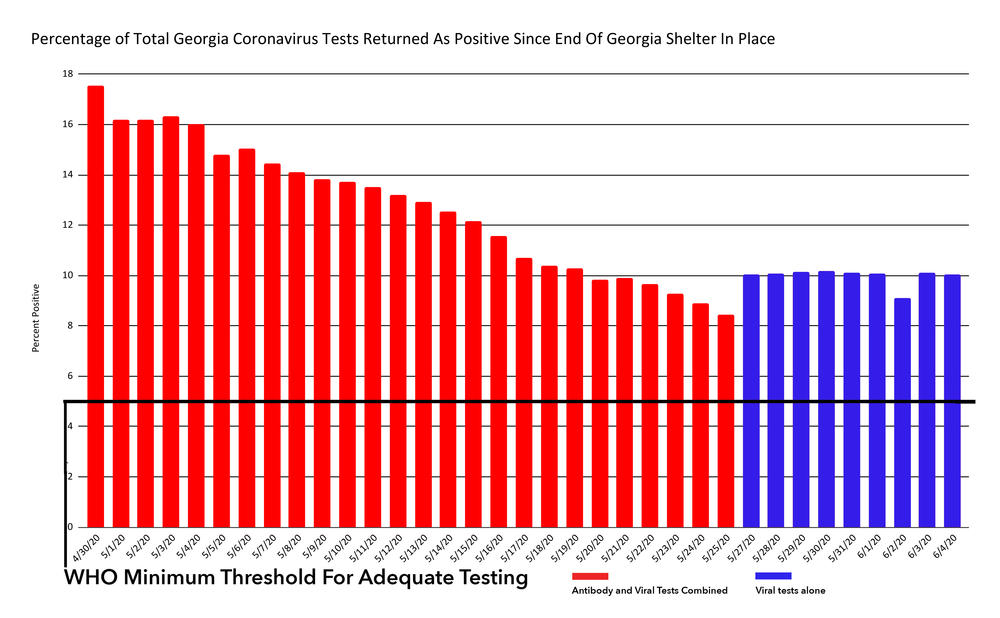Section Branding
Header Content
DATA: Track Coronavirus Across Georgia
Primary Content
UPDATED June 4, 2020
The graph represents the new World Health Organization guideline for minimally adequate coronavirus testing of 5% of tests being returned as positive. Before May 27, the graph reflected viral coronavirus tests performed as well as total antibody tests performed. But, while the Georgia Department of Health records positive viral tests, they do not record positive antibody tests. That essentially treated every antibody test as a negative result, affecting the calculation of the percentage of positive tests and giving the number a noticeable cushion. The metric is now calculated without the antibody tests.
The thinking behind the percentage positive number is this: as testing increases in frequency and geographic coverage, eventually (hopefully) there will be more coronavirus tests performed than there are infected people to identify. The decreasing percentage of infected people in the testing totals is thought to be reflective of a trend toward this goal.
This map below presents coronavirus infections adjusted for a per capita rate of incidents per 100,000 people. Click an area for more details.
This map represents total coronavirus infections.
This map represents COVID-19 deaths adjusted for a per capita rate of deaths per 100,000 people.
This map represents total COVID-19 deaths.


